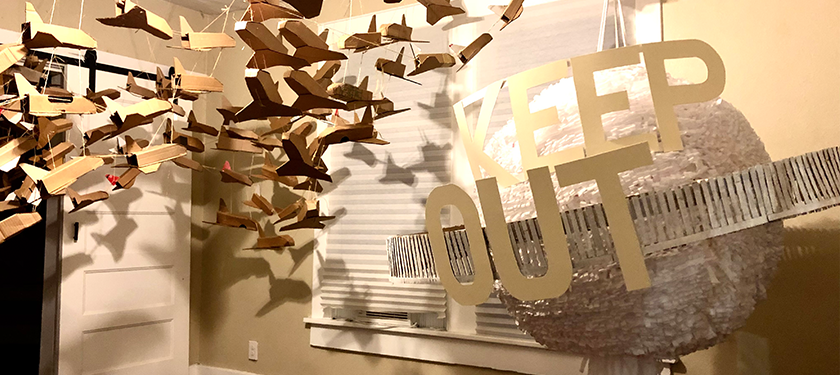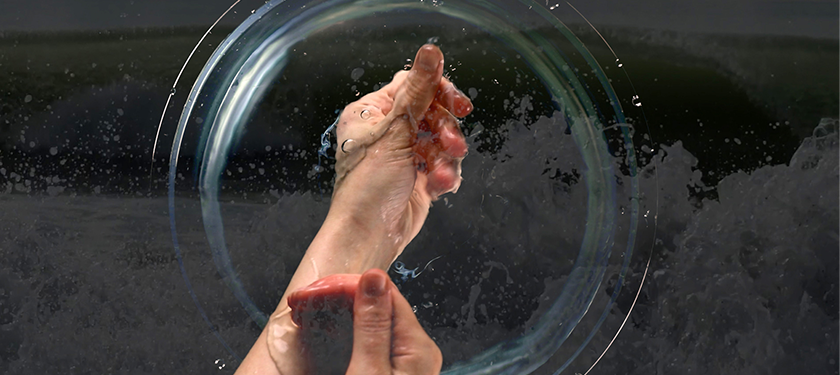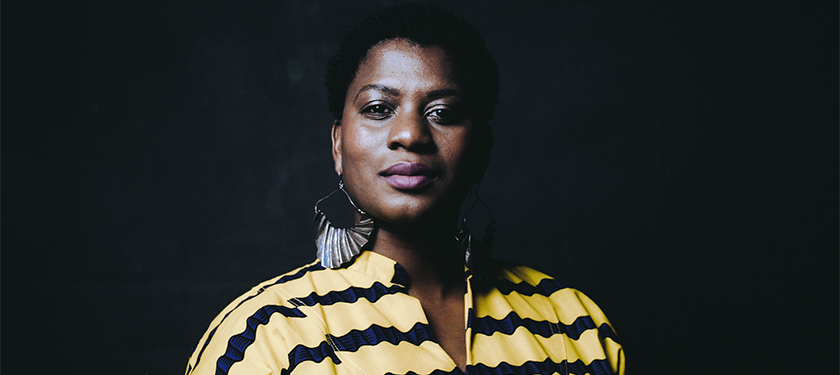
Conversations | IAP Alumni Share Insights from NYFA’s 1st Virtual Art Salon
“Just as every performance needs rehearsals, so does a Zoom talk. Practice makes everything go smoothly.” — Han Qin
In December 2020, NYFA presented its first Virtual Artist Salon with a group of Immigrant Artist Mentoring Program (IAP) Alumni that included Juan C. Escobedo (IAP ’19), Tanika I. Williams (IAP ’19), Han Qin (IAP ’17), Kiana Honarmand (IAP ’14), and Fernando Vieira (IAP ’18). The event was created and produced by IAP alumna Rupy C. Tut (IAP Oakland ’19) and IAP mentor Jason Wyman (IAP Oakland Mentor ’18 and ’19) and gave art lovers from around the world a rare opportunity to see new artworks by immigrant artists in San Antonio, Oakland, New Jersey, and New York; learn more about the artists and their process of making their works; and witness peer-based feedback. We spoke with the artists to obtain tips and insights on the process of participating in such a showcase.
NYFA: Leading up to this salon, Rupy provided a storytelling workshop for Immigrant Artist Mentoring Program alumni. What did you learn from her about storytelling?
Tanika I. Williams: Rupy was really instrumental in helping me think about how to bring live performance elements into the virtual space. She pointed my attention to latent elements that I should highlight in order to create a more robust emotional landscape for viewers to enter. Jason’s technical support was invaluable. He provided essential guidance to stretch the limitations and amplify the strengths of virtual performance.
Kiana Honarmand: When talking about my work, I used to think about it more in an artist statement style; more formal and less personal. But Rupy talked about how storytelling should be personal. I learned to talk about different aspects of how I, as an artist, came up with the project, what influenced me, and what the process was like. I learned that it’s important to connect with the audience by having a more direct and personal conversation about the work through storytelling.
Juan C. Escobedo: Rupy and Jason clarified that storytelling is not just a conceptual mechanism, but can also be used in a logistical way and used to structure a cohesive presentation.
Han Qin: I learned a lot from Rupy and Jason, such as the flow of storytelling, ways to offer tech support at presentation, and the production side of organizing the event. I feel very satisfied by learning so much as well as contributing my part. Rupy gave me excellent advice on the presentational balance between obscure academic language and everyday conversation. Jason shared specific skills for the Zoom environment. Before the session, I never thought of Zoom as an exhibition space. Jason enlightened the possibility.
Fernando Vieira: I learned to pay attention to timing during a performance. Every second counts. Therefore, I learned to be very selective with what I needed to present in order to make it fit into my timeframe.

NYFA: Do you have any practical tips about this experience to share?
KH: Jason introduced a way of breaking down the presentation minute by minute, into what topics to cover and what technologies/tools to use. Even though this is such a simple exercise, it can be very effective for having a direction and staying on point.
TIW: For artists who are considering virtual presentations, I suggest doing several run-throughs on multiple platforms and on multiple types of devices. Exploring multiple platforms will help artists better understand technical possibilities and troubleshoot potential challenges. I suggest using multiple devices in order to see how the performance will appear/play across various screen sizes and hardware.
JCE: Practical tips for virtual presentations: keep it simple, do not overthink it.
HQ: Just as every performance needs rehearsals, so does a Zoom talk. Practice makes everything go smoothly.
FV: Always prepare in advance. Do not leave things for the last minute. Preparation makes for the best final results.

NYFA: Having done the Virtual Salon once, is there anything you would do differently now?
KH: I enjoyed seeing aspects of live performance that some of the artists in the salon did in their presentations. If I were to do it again, I would add a live performance alongside the video.
TIW: The next time I do a virtual salon, I will spend more time doing tech run-throughs for a multi-camera set-up. I am interested in using Open Broadcaster Software (OBS) for future salons as well.
JCE: I’m not entirely sure there is anything I would do differently. There are always tweaks to different components that can be done, but the installation was fitting for the platform and that specific presentation at the time, so I will accept what was presented. Also, know that I had worked on that installation daily for the nine months leading up to the virtual show, so I am pretty burned out from thinking about it.
Artists Bios
Kiana Honarmand is an artist born and raised in Iran. Her work addresses issues related to her cultural identity, violation of women’s rights in Iran, censorship, and the Western perception of the Middle East. Derived from her interest in different materials and processes, Honarmand’s interdisciplinary practice features the use of digital fabrication tools as well as traditional methods of craft.
Tanika I. Williams is a Brooklyn-based writer, and video and performance artist. Her work investigates Black women’s use of movement, mothering, and medicine to produce and pass on ancestral wisdoms of ecology, spirituality, and liberation. Williams’ residencies and features include NYFA, BRIC, 99.5WBAI, Art in Odd Places, Creative Time, GreenspaceNYC, and Performa.
Juan C. Escobedo, born in 1985 in El Paso, TX, explores his identity as a brown, lower-class, Mexican-American from a U.S./Mexico border town. Escobedo’s work discusses residual class and race shame that arises from living in a predominantly “white” structured U.S. which favors light-skinned individuals, middle-class, and above socioeconomic classes.
Han Qin’s work extends to printmaking, video, installation, and performance art, while primarily focusing on digital art. Qin’s work flows from her experience of home and relocation. Having left China at the age of 24, she feels the ambivalence between nostalgia and the wistfulness of transition, translating the moments of passing through, getting together, migrating, and even conflicting. Qin’s work has been exhibited in the U.S. and China at the Nassau County Museum of Art, Long Island Biennial, Fou Gallery, Zhejiang Museum, and Changjiang Museum of Contemporary Art, among others.
Fernando Vieira is a New York-based writer, director, and performer whose works document the effect of heteronormativity and misogyny on the lives of women and queer individuals. Vieira has been part of artistic cohorts at institutions such as NYFA, Creative Capital, and Leslie-Lohman Museum.
Rupy C. Tut is an Oakland-based visual artist working with Indian miniature painting (an 18th-century Indian art form) and calligraphy. She dissects historical and contemporary narratives as a first-generation Punjabi Sikh immigrant, exploring the meaning of identity and belonging in the context of labels within the art world and outside.
Jason Wyman is Queerly Complex. Today, that means loving fearlessly + living radically. Wyman values the power of art to reflect, to question, to challenge, to liberate, to heal, and they are honored they’ve been able to create alongside + in service to Black artists + Indigenous artists + Youth artists + Queer artists + Trans artists + Femme artists + Immigrant artists + Disabled artists + Poor artists + Anti-racist artists.
– Interview Conducted by Alicia Ehni, Program Officer and Kyle Lopez, REDC Fellow
This post is part of the ConEdison Immigrant Artist Program Newsletter #135. Subscribe to this free monthly e-mail for artist’s features, opportunities, and events. Learn more about NYFA Immigrant Artist Mentoring Program.
